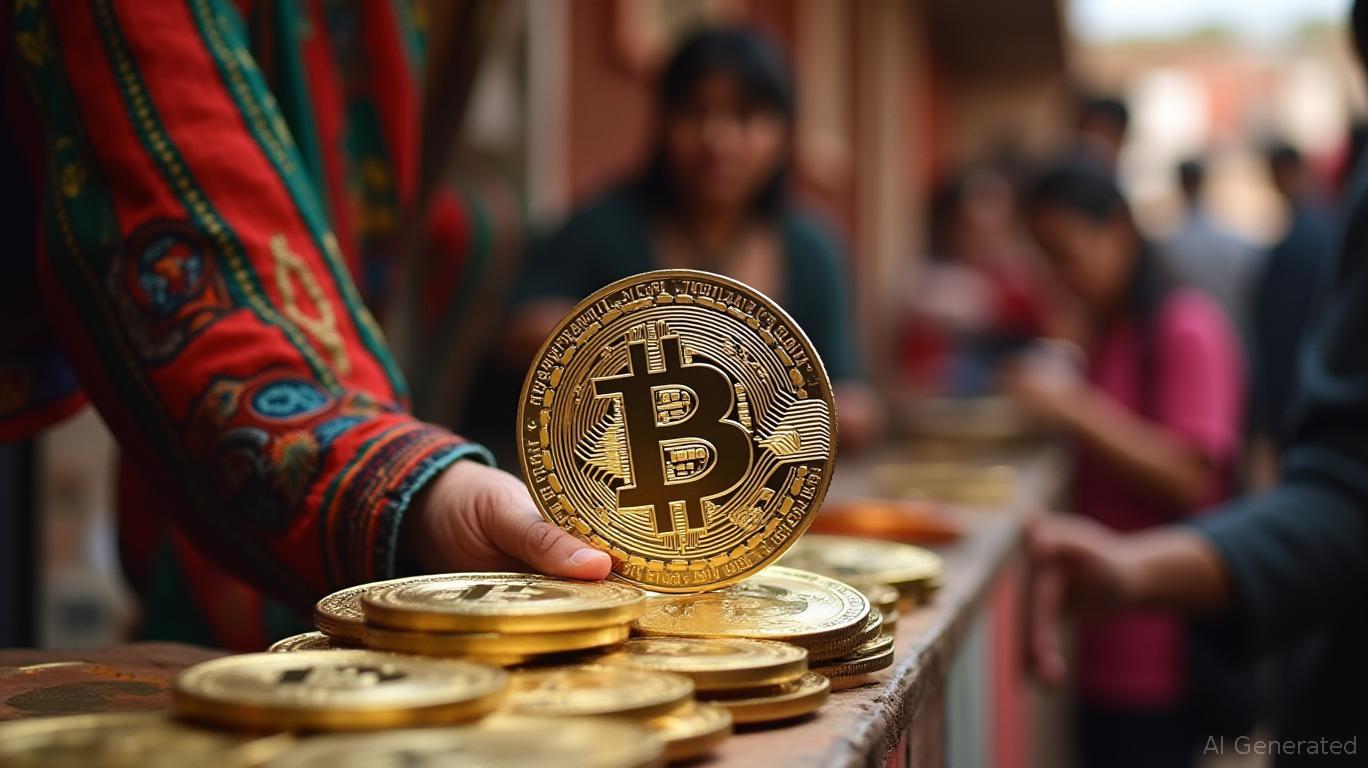USDT Usage Surges in Bolivia Amid 24% Inflation Eroding Trust in Local Currency
- Toyota, BYD, and Yamaha dealers in Bolivia now accept Tether’s USDT for vehicle purchases, expanding crypto adoption amid 24.15% inflation. - The move follows Bolivia’s 2024 crypto ban removal, with YPFB and Banco Bisa adopting USDT to hedge against currency instability and $171M in forex reserves. - BitGo confirmed the first USDT car transaction in September, while crypto volumes surged 630% YoY to $294M in H1 2025. - Political elections and Tether’s $172B USDT market cap highlight crypto’s role in pres

Dealerships for Toyota, BYD, and Yamaha in Bolivia have started taking Tether’s
USDT’s arrival in Bolivia’s auto market came after the country removed its longstanding ban on crypto in June 2024. This regulatory change enabled banks to handle
BitGo, a crypto security company, verified the first car sale in Bolivia paid with USDT—a
The ongoing economic challenges in Bolivia have hastened the move toward digital currencies. The boliviano has lost almost half its value on the black market this year, forcing families and companies to look for more stable options. Even as the government keeps the official exchange rate artificially low, the widening gap with the black market rate has made crypto more essential. Tether’s USDT, now valued at $172 billion in market cap, is increasingly seen as a safeguard for purchasing power—especially in a country where 60% of people remain outside the banking system title4 [ 4 ].
The uptake of USDT in Bolivia mirrors a wider trend across Latin America, where economic volatility is fueling stablecoin popularity. Countries like Argentina, Brazil, and Colombia are experiencing similar changes, with
Political events will play a big role in Bolivia’s crypto path. The October 19 run-off election between Rodrigo Paz Pereira and Jorge “Tuto” Quiroga will determine whether the country pursues more blockchain-driven transparency or takes a more cautious approach. Paz Pereira is in favor of using blockchain to fight corruption, while Quiroga’s position is less clear. The election’s outcome will affect rules and investor trust in Bolivia’s digital asset sector title6 [ 6 ].
Tether’s growth in Bolivia is part of its global push to cement USDT’s leading status. The company has also revealed plans for USA₮, a stablecoin regulated in the U.S. and compliant with the GENIUS Act, and has made large investments in gold supply chain initiatives. CEO Ardoino has called gold a “natural Bitcoin,” highlighting Tether’s ambition to merge traditional resources with digital finance. These developments show a wider pattern of stablecoins entering world trade, especially in regions coping with weak fiat currencies title7 [ 7 ].
Disclaimer: The content of this article solely reflects the author's opinion and does not represent the platform in any capacity. This article is not intended to serve as a reference for making investment decisions.
You may also like
[Initial Listing] Bitget Will List Planck (PLANCK) in the Innovation, AI and DePIN Zone
Buy PLAI,Get 100% fee rebate in PLAI!
Bitget to support loan and margin functions for select assets in unified account
Bitget launches cross margin trading for BGB/USDT and BGB/USDC